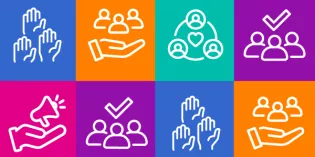Update, May 2022 - This guidance is no longer available.
The Royal College of Paediatrics and Child Health (RCPCH) has today published guidance for clinicians about the shielding of clinically vulnerable children and young people.
The guidance updates the original shielded patients list, which was published in the early days of the pandemic. Given that COVID-19 was a novel virus, the original guidance was cautious and covered a broad range of conditions and clinical vulnerabilities. As more data and research has emerged, it is now possible to provide further information for clinicians to assist with conversations and decisions about shielding.
According to the new RCPCH guidance, the majority of children with conditions including asthma, diabetes, epilepsy, and kidney disease do not need to continue to shield and can, for example, return to school as it reopens. This includes many children with conditions such as cerebral palsy and scoliosis, for whom the benefits of school - in terms of access to therapies and developmental support - outweigh the risk of infection.
The guidance sets out two groups of shielded patients. Patients in Group A should continue to shield. Patients in Group B will require a case-by-case discussion to decide whether, on the balance of risks, a child should be advised to continue to shield.
Dr Liz Whittaker, Consultant in Paediatric Infectious Diseases and Immunology and co-author of the guidance for RCPCH, said:
There is a group of children who are very clinically vulnerable, and they should continue to shield. There is a second group who are currently shielding but may not need to do so. It’s important for parents and carers to have a conversation with their specialist to determine the best course of action. These conversations will be informed by knowledge of the severity of the disease, intensity of the treatment, and for some, their home situation. We need to get the balance right between clinical risks and the social impact of shielding. We know this has been a tough period for lots of children, young people, and their loved ones. This guidance is to help doctors have evidence-based discussions with parents and carers.
The guidance states:
- Children and young people who are cared for just in primary care are very unlikely to need to continue to shield.
- A small group of children who are ‘clinically extremely vulnerable’ due to their pre-existing condition will need to continue to shield.
- A further, larger group of children exists who, due to their underlying condition, may need to continue to shield. The decision on whether they need to do so would normally result from a discussion between the clinician, the child and their family.
Patients can be removed from the shielding patient list by their GP or specialist, following consultation with the child and their family, and other clinicians where appropriate.
More information
The new guidance takes account of systematic reviews about milder outcomes in children, research evidence summaries, and a service evaluation and audit on the care needs of children admitted to hospital in England.
This advice has been developed in partnership with a wide range of paediatric specialty groups: British Association of Paediatric Nephrology, British Association of Perinatal Medicine, British Congenital Cardiac Association, British Inherited Metabolic Disease Group, British Paediatric Allergy, Immunity & Infection Group (working with the UK Primary Immunodeficiency Network), British Paediatric Neurology Association, British Paediatric Respiratory Society, British Society for Paediatric Endocrinology and Diabetes, British Society of Paediatric Gastroenterology, Hepatology and Nutrition, British Society for Rheumatology, Children’s Cancer and Leukaemia Group, Paediatric Special Interest Group of British Haematology Society. Many specialties also worked with parents and patient groups as they developed their advice.










